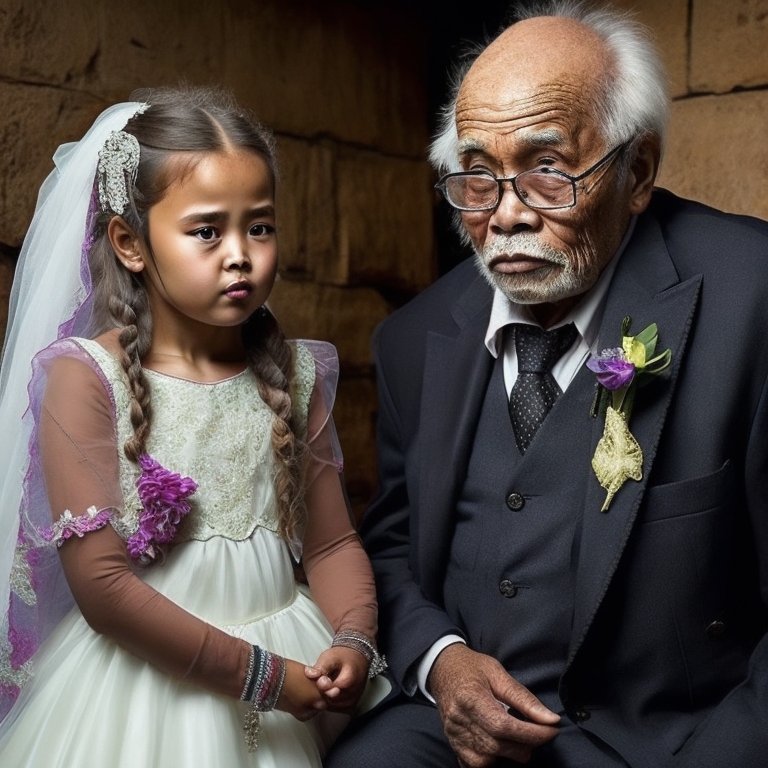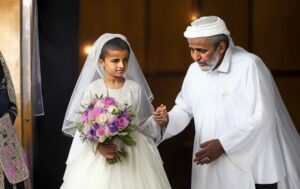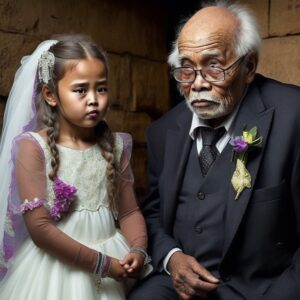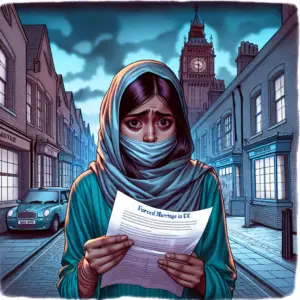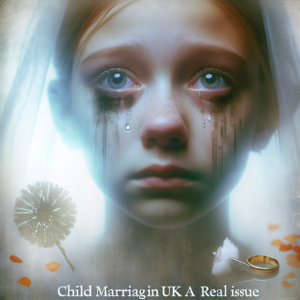Title: The Devastating Impact of Child Marriage on Girls’ Lives
Introduction:
Child marriage is a global issue that affects millions of girls worldwide. It refers to the union of a child, typically under the age of 18, in a marital relationship, often against their will. This practice has severe consequences for the physical, psychological, and social well-being of young girls. Despite efforts to eradicate child marriage, it persists in many regions and continues to deprive girls of their childhood, education, and future opportunities. This article explores the devastating impact of child marriage on girls’ lives.
I. Educational Deprivation:
Child marriage acts as a major barrier to girls’ education. When girls are married off, their access to formal education significantly diminishes. Instead of being in school, they are forced into domestic roles, perpetuating cycles of poverty and illiteracy. Marrying young also limits their potential for personal growth, critical thinking skills, and economic independence. Denying girls an education perpetuates gender inequality, resulting in pervasive social, economic, and health issues in their communities.
II. Health Risks:
Child marriage puts girls’ health at risk in numerous ways. Young brides often become pregnant before their bodies are fully developed, leading to complications during childbirth. Maternal mortality rates are highest among girls aged 15 to 19. Early pregnancies increase the chances of premature births, low birth weights, malnutrition, and infant mortality. Moreover, child brides frequently suffer from sexually transmitted infections due to their lack of awareness, access to contraception, and power dynamics within their marital relationships.
III. Psychological Consequences:
Child marriage subjects girls to immense psychological trauma. Many young brides face emotional and physical abuse from their spouses, causing long-term psychological scars. Forced into adulthood prematurely, these girls often experience anxiety, depression, and feelings of helplessness. Furthermore, enduring abusive relationships throughout their lives perpetuates cycles of violence, affecting both the girls and their future children.
IV. Economic Burden:
Child marriage has profound economic implications for girls. Early marriage robs girls of the opportunity to develop skills and secure stable jobs, trapping them in poverty. Consequently, they become financially dependent on their spouses or families and struggle to break free from the cycle of poverty. Lack of education and job prospects significantly limit their ability to contribute effectively to their families, communities, and national economies.
V. Social Isolation:
Child marriage isolates girls from their peers, communities, and broader society. Married young girls become socially disconnected and are unable to foster friendships or engage in social activities typical for their age group. This isolation has detrimental effects on their self-esteem, social skills, and overall well-being, hindering personal development and preventing them from participating in communal decision-making processes.
FAQs:
Q1. Are child marriages prevalent across the world?
Child marriages predominantly occur in developing countries, particularly in South Asia and Sub-Saharan Africa. However, child marriage is a global problem, affecting communities in various regions, including Latin America, the Middle East, and even some developed countries.
Q2. What drives child marriages?
Child marriages are driven by various factors, including poverty, cultural norms, gender inequality, lack of education, religious practices, and perceived notions of safeguarding girls’ honor in some communities.
Q3. What efforts are being made to end child marriage?
International organizations, governments, and grassroots initiatives are working towards ending child marriage. These efforts include raising awareness, advocating for policy changes, improving girls’ access to education, providing support to at-risk communities, and empowering girls and young women to resist early marriage.
Q4. What can individuals do to combat child marriage?
Individuals can contribute by supporting organizations actively working to end child marriage, educating communities about the negative impacts of child marriage, providing financial support for girls’ education, and advocating for legal reforms that protect girls’ rights.
Conclusion:
Child marriage is a violation of human rights and has detrimental effects on girls’ lives. It perpetuates gender inequality, denies girls an education, jeopardizes their health, and limits their economic prospects. Eradicating child marriage requires comprehensive efforts at multiple levels, including legislation, education, community engagement, and empowerment of girls. By addressing this issue, societies can foster a brighter future for girls, empowering them to reach their full potential and contribute positively to their communities.



